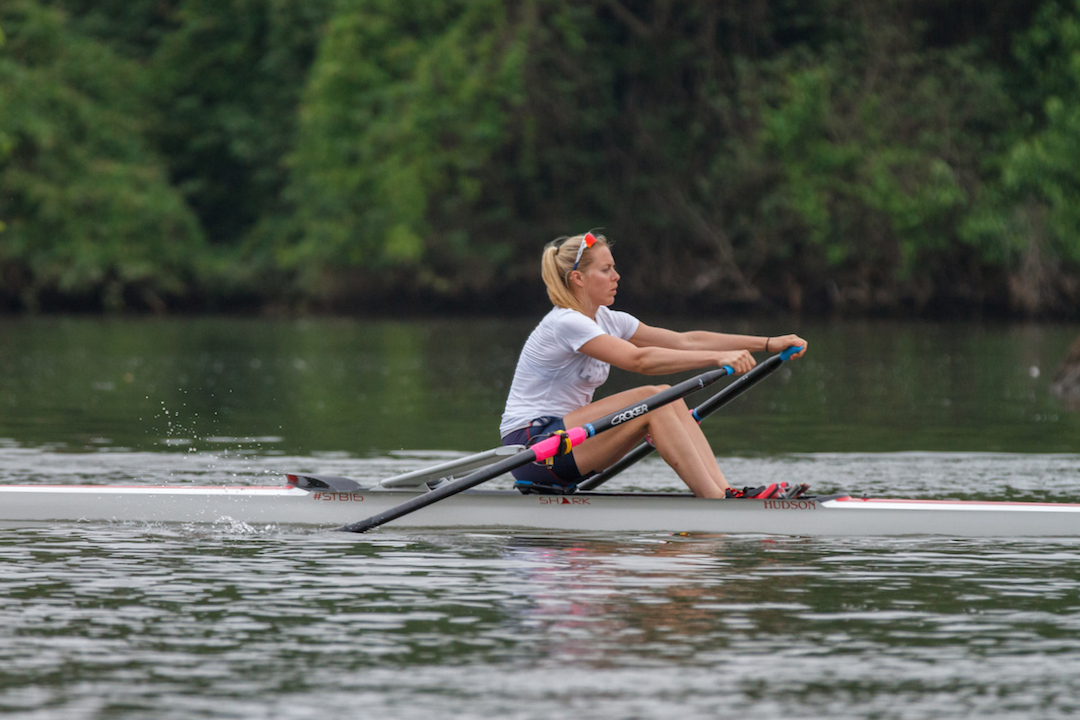Coaches' Corner: Autumn Racing and Peak Performance, Workout Structure
 |
| Evening light, Eliot Bridge (Photo: © Bryan Kitch) |
With a Championship peak as the ultimate goal, it is certainly important to avoid getting into 'race-shape' or being 'race ready' too soon. How do you avoid this as a coach? In order to understand this, one must understand what makes one race fit and ready to achieve physiological peak. We know that race pace work and lots of rest counterbalanced with great intensity will get one physiologically ready for a peak performance. Because we know a peak cannot be held for too long, we want to put this off until it's time. Not by downplaying the workouts or telling rowers ease off the pace, but instead by making sure that they are too tired to go too hard, or dig too deep, in any given workout. For example, you can still do 500m intervals in the Fall, but you'd better have lots of reps and very little rest. If you were to do 10x500m intervals with 30 seconds rest in the middle of a high volume week, then you would get the physiological development you are looking for without allowing the athlete to peak. On the other hand, 4x500m with 3 minutes rest would not be a good workout in the offseason, because it will allow rowers to dig too deep and work to close to their sprint maximum.
Good offseason workouts will vary greatly depending on the level of athlete, his/her physical maturity, and what he/she can handle, but should generally include longer intervals with short rest. Workouts like 3-5 x 2500 meters w/ 2-3 minutes rest, 8-12 x 2:30 on, :30 off, 6-12 x 1k w/ 2 min rest would all be great when training to build aerobic strength. 1-2 workouts of this nature per week surrounded by as much volume as appropriate would be good. It is also good to have one longer session every 1-2 weeks when building aerobic base. Long workouts should be between 50-100 minutes depending on experience level and physical maturity. Maybe elite level athletes can benefit from up to 120 minutes straight through a few times in the offseason, but even this is not really necessary when the ultimate goal is just 2000 meters. Going longer will only serve to dull the edge on any power and speed ability. The longer workouts obviously work the endurance ability and tend to slow-twitch muscle. Although rowing requires great endurance, it also requires great power and speed. At a certain point, pure endurance training and pure power/speed training are working against each other. It is important to find a balance. Plus, the longer you go, you run the risk of starting to burn muscle as fuel if there is no chance to refuel with carbs, fat and protein within the workout. This process is known as rhabdomyolysis, which causes muscle fiber contents (myoglobin) to be released into the bloodstream, which can dangerous, and even lead to kidney failure.
People often want to know what successful coaches' favorite workouts are. It's not about magic workouts, but about how many workouts are put together, how workouts are set relative to one another, and how one recovers from the work and responds to the training. It is sometimes wise to pull a rower from a hard session before it is finished if they have blown up, or have not recovered from a previous session. Because there is a general mindset and mentality of toughness and beating people into the ground in our sport, coaches and athletes often push beyond the point of diminishing returns. This is rarely a wise thing to do from a physiological perspective. Sometimes it is good to train the mental side of things by asking a rower to push beyond the point of blowing up. However, it is important to know that blowing up is most commonly a physiological reaction more so than a psychological reaction. If you bonk simply because you have gone too hard for your fitness and cannot recover, there is no going back – that workout is done. Many coaches are not leery enough of this, and constantly push their rowers too hard, causing them to blow up before the workout is over, meaning they will not get the most out of the workout, and, as discussed above, could actually find their training stunted/hurt in the following days, as it takes the athletes longer to recover. If a rower overloads himself/herself with too much lactic acid, spikes his/her heart rate too much, too soon, or depletes his/her glycogen stores, there is no recovering from that in the same workout. Forcing rowers to do one or two more intervals when they have tapped out their energy, or yelling at them to be tougher, is not going to replenish their glycogen stores. It will simply make it harder for the athletes to recover.
Once you have built your base as strong as possible in a given training cycle, you can start to put the speed on top as you build toward the peak. The stronger and bigger the base/foundation, the higher the possible peak can be. Of course, speed must be put on in the right amounts, at the right time, to get the optimal, highest possible peak.
-Justin and the RR Team

